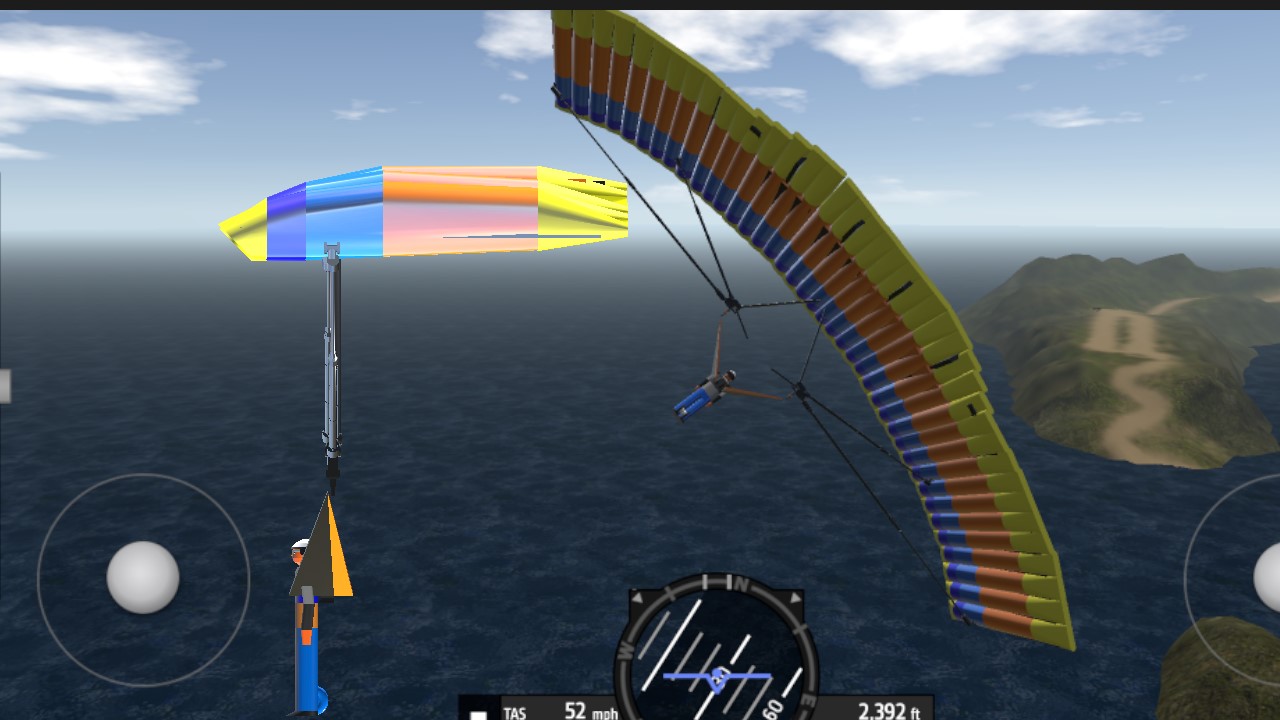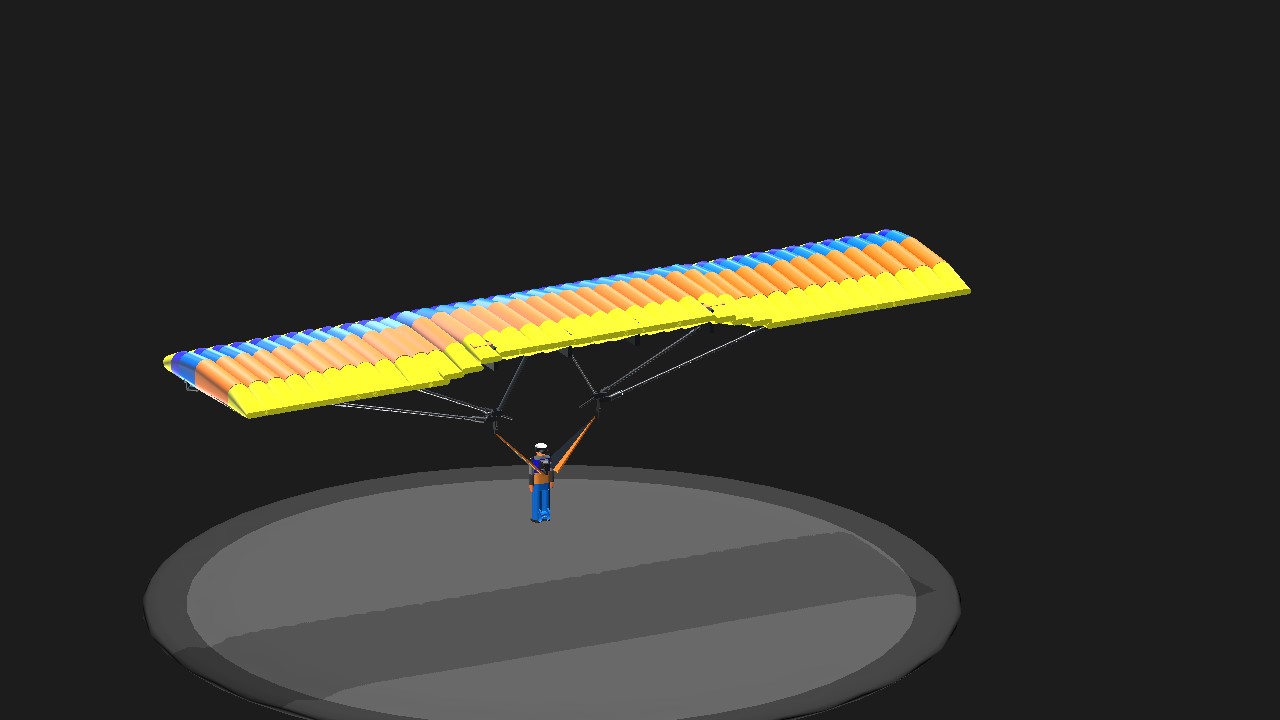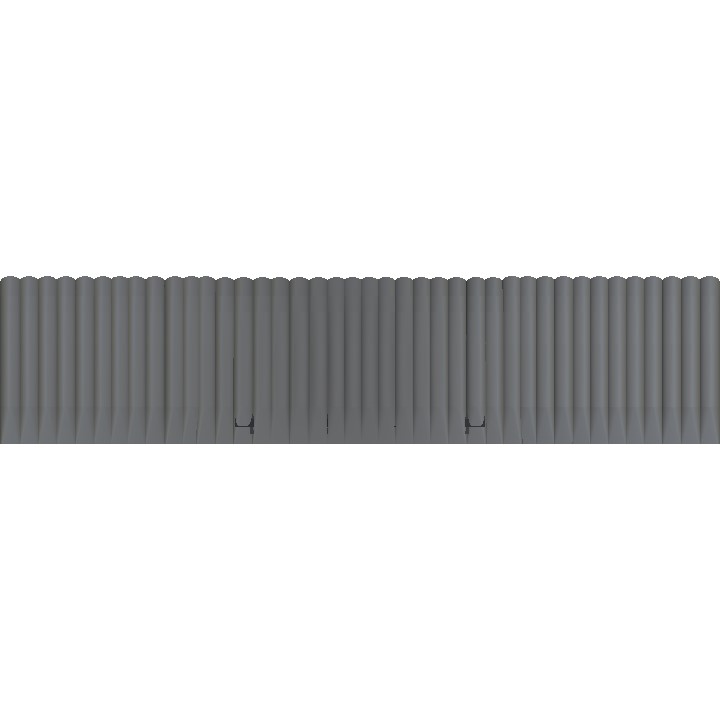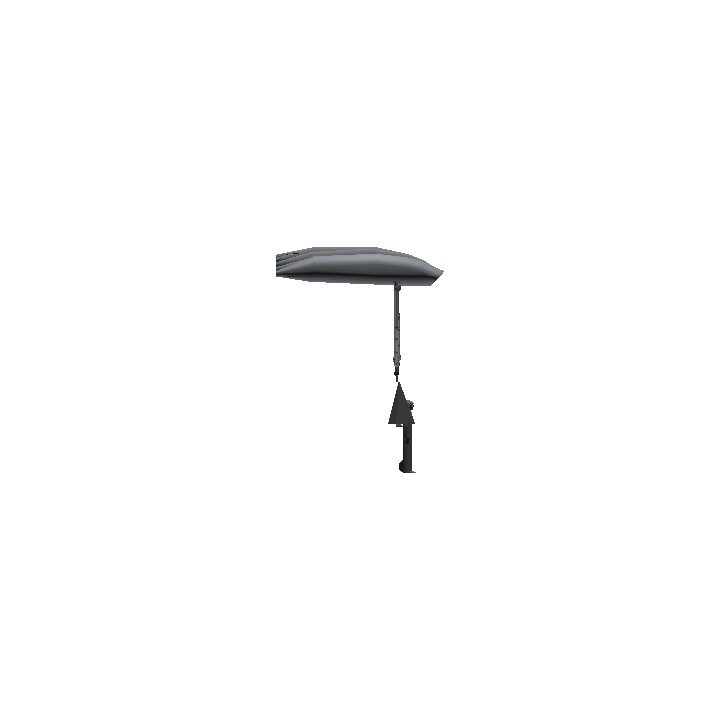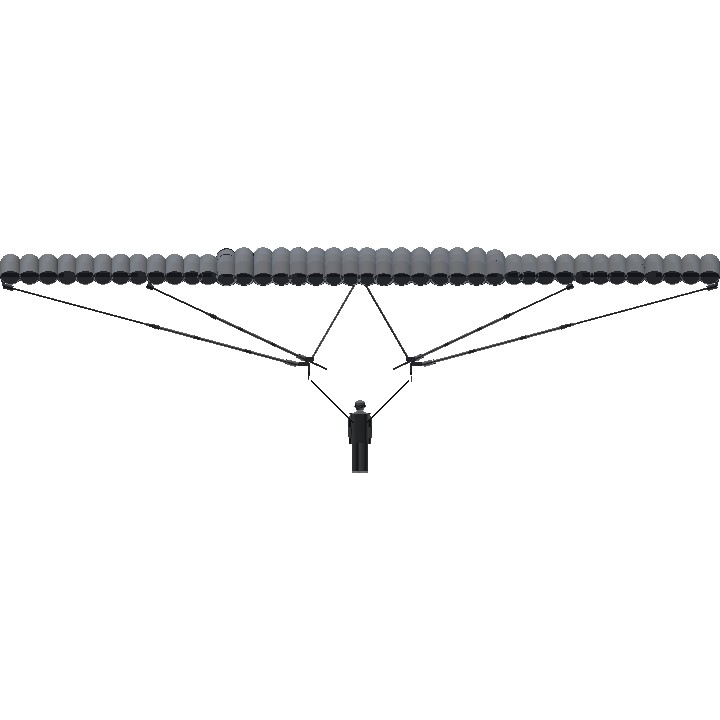My best attempt so far at making a parawing or steerable parachute. It is still a glorified proof-of-concept and far from perfect. For starters its wingspan is a massive 70 ft whereas real life parawings seldom get bigger than 40. Also I didn't have time to integrate the pilot into the controls. It still uses pistons to simulate 'pulled' cables. Yet overall it flies pretty well. So feel free to download, fly, experiment and improve. and please, if you have a better flying or even cooler looking version, post it!
Flying: As simple as it gets. Right joystick left/right for roll/turn. Right joystick up/down for pitch/sink. Left joystick does nothing but braking. The craft is pretty stable as long as you keep the pitch within limits (-60 to +60.degree).
Activate1 jettisons the parawing and deploys an emergency parachute... Just in case
Landing: Pull trim slider down to move pilot's legs forward ('Asume crash position') . Find a level landing field and line up. Keep parawing as level as possible. Upon hitting the ground, pull brake (left joystick down) to slow down parachute and avoid going head over. When landed (or just crashed in style) slide trim lever all the way up to detach parachute and stand up.
First flight: Simpleplanes comes with three starting positions: Bandit, Wright and Yeager Final Approach. Unfortunately all of them launch your plane at a substantial starting speed, (like 120 mph for Bandit, 250 mph for Wright,) which is way above the safe flying speed of the parawing. So invariably, the first five seconds of flying will be spent keeping the craft from getting into a spin, also all of those starting points are over water so either you make the runway or you have to swim home . I found that Yeager has just the right combination of height and distance to allow you to easily make it to Yeager airport and land on any runway. On Bandit I always fell about 100 yards short of making the runway but instead crashed against the slopes. I never managed to start from Wright Approach because the starting airspeed was so high it shredded the parawing to pieces.
My tip: Start at Yeager Final Approach. Carefully push Pitch forward and back until your craft is stable. This may take several attempts to get the feeling right. Once you get flying stable and straight, pull up the sliding menu to the left and save your current position as a 'location' you can then use as a starting point for your next attempts. Play around circling left and right, pull trim slider down to extend the pilot's legs and try coming in for a landing. This may take several attempts as well, but once you master it, you can call yourself an experienced parawing pilot.
Then, step I to your favorite bush plane, cruise around at 3000 ft and 90 mph until you are over a large swat of even ground such as the valley on Wright Island, stop the game and save this location as a new paraglider launching point.
Building your own parawing : although once you look at the build in skeleton view or you just think away the fuselage pieces that make up the 'parachute' , the design looks pretty simple, I had the greatest trouble getting the craft to actually fly. Sometimes just moving a hinge from one position to another would cause the craft from just exploding as soon as I spawned it. So start small, save often and be prepared to reload the last stable save over and over as all your upgrades keep failing. Most of them will.... Often for reasons you don't fully understand. However finally you will get things right, hopefully.....
As for the principle of the wing: the best way to explain it is through the motorized proof-of-concept parawing trike I used to design the wing assembly on. I posted it as a successor to this post. (Or just click HERE. to have a quick glance.)
I for one will continue experimenting with parawing designs, so keep an eye out for updates or new posts. When I post a new parawing, downloading it will be absolutely worth it. I promise.....
Specifications
Spotlights
- ThomasRoderick 3 months ago
- LunarEclipseSP 3 months ago
- SPTNR 3 months ago
General Characteristics
- Predecessor No engines challenge
- Created On Android
- Wingspan 55.9ft (17.1m)
- Length 13.1ft (4.0m)
- Height 17.5ft (5.3m)
- Empty Weight 2,431lbs (1,103kg)
- Loaded Weight 2,435lbs (1,104kg)
Performance
- Wing Loading 3.6lbs/ft2 (17.4kg/m2)
- Wing Area 682.2ft2 (63.4m2)
- Drag Points 12426
Parts
- Number of Parts 300
- Control Surfaces 10
- Performance Cost 1,328

